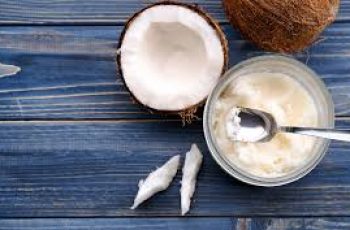
How Often Should You Use an Oil-Based Cleanser for Dry Skin?
When it comes to choosing the perfect skincare products, few steps are more essential than cleansing. As the very first phase of any effective skincare routine, cleansing removes makeup, excess oil, dirt, and impurities accumulated throughout the day. And for those with dry or dehydrated skin, finding the right cleanser can be a game-changer—not only for how your skin feels immediately afterward, but also how it functions long-term.
Oil-based cleansers are having a major moment—and for good reason. Their nourishing formulas effectively dissolve even the most stubborn makeup and sunscreen, all while preserving the skin’s delicate moisture barrier. But if you’re dealing with dry skin, you may wonder: How often should I use an oil-based cleanser? Should it be a daily ritual, or something you save for makeup-heavy days?
Let’s dive into what makes oil-based cleansers such powerful tools for dry skin, how they work, and exactly how often you should be using them.
Should You Use an Oil-Based Cleanser If You Have Dry Skin?
Absolutely, yes. In fact, oil cleansers might just be your skin’s new best friend.
If you have dry or sensitive skin, you know how frustrating it can be to find a cleanser that effectively removes dirt and makeup without stripping your skin of the natural oils it desperately needs. Harsh cleansers can leave the skin feeling tight, flaky, and uncomfortable—exactly what you don’t want from your daily skincare routine.
This is where oil-based cleansers shine. They offer a gentle yet thorough cleanse that respects your skin’s natural lipid barrier, while infusing it with hydration and nourishment. Unlike foaming cleansers or gel-based formulas (which are often better suited for oily or acne-prone skin), oil cleansers don’t leave your skin dry or squeaky-clean—instead, they leave it soft, supple, and balanced.
How Do Oil-Based Cleansers Work on Dry Skin?
The beauty of oil cleansers lies in how they work. It may sound counterintuitive, but “like dissolves like”—which means that oil attracts and lifts away other oil-based impurities like sebum, sunscreen, and waterproof makeup.
Most oil cleansers are formulated with emulsifiers, ingredients that allow the oil to mix with water during rinsing. When you add water to the oil on your skin, it transforms into a silky, milky emulsion that easily rinses away—no greasy residue left behind.
Key Benefits of Oil Cleansing for Dry Skin:
Gently removes makeup, SPF, and daily buildup without drying the skin
Helps protect and maintain the skin’s natural moisture barrier
Leaves the skin feeling hydrated, not tight
Works well as a first step in double cleansing
Ideal for sensitive, mature, or rosacea-prone skin types
How Often Should You Use an Oil-Based Cleanser?
Here’s the good news: You can use an oil-based cleanser daily—but with a few important caveats depending on your skin’s individual needs and what products you’re pairing it with.
🔹 For Dry to Very Dry Skin:
Use once daily, preferably at night.
Using an oil cleanser in the evening is ideal, as it removes sunscreen, makeup, and environmental pollutants accumulated throughout the day. For those with dry skin, once daily is usually sufficient—and avoids potential over-cleansing, which can lead to further dryness or irritation.
If your morning routine involves occlusive night creams or facial oils, you can use a lightweight oil cleanser in the morning to gently remove product residue before applying daytime skincare. However, if your skin feels clean and comfortable, skipping the morning cleanse may help preserve moisture.
🔹 Double Cleansing: How Often Is Too Often?
Double cleansing—using an oil cleanser followed by a water-based cleanser—has become a popular routine, especially for makeup wearers. But for dry skin types, it’s important not to overdo it.
If you wear heavy or waterproof makeup, live in a polluted area, or apply SPF multiple times a day, double cleansing in the evening is a great option. Just make sure your second cleanser is gentle, preferably a cream or hydrating gel that won’t strip your skin further.
Avoid double cleansing twice a day unless absolutely necessary, as this can disrupt your moisture barrier.
Can You Use an Oil-Based Cleanser in the Morning?
Yes—but it’s optional.
Morning cleansing is more about refreshing the skin and removing any products applied overnight than deep-cleansing. If you used a thick night cream, face oil, or sleeping mask, a quick oil cleanse in the morning can help clear residue and prep your skin for serum and SPF application.
Oil cleansing in the morning may be especially helpful if you:
Apply heavy moisturizers or occlusives at night
Experience overnight oiliness or product buildup
Have dry skin and want a gentle alternative to foaming cleansers
However, if your skin feels fine upon waking and doesn’t need a cleanse, you can skip it and go straight to your hydrating toner or serum.
What Happens If You Use Oil Cleansers Too Often?
While oil cleansers are generally gentle, overuse can backfire, even on dry skin. If you cleanse too often or use too much product:
You may begin to strip away your skin’s natural sebum
Skin can feel tight, parched, or flaky
The protective lipid barrier can become compromised
Skin may become more sensitive to environmental damage
It’s a delicate balance—cleansing thoroughly but not excessively. That’s why most dermatologists recommend limiting oil cleansing to once per day, typically in the evening, for dry skin types.
Can You Use Only an Oil Cleanser—Without a Second Cleanser?
Yes, especially if you’re not wearing heavy makeup or SPF.
Oil cleansers are effective enough to use on their own, provided they emulsify well and rinse cleanly without leaving behind a residue. Many people with dry skin find that single cleansing with oil is enough to thoroughly clean their skin without causing dryness.
However, if you’re applying multiple layers of makeup or sunscreen, it’s generally best to double cleanse to ensure that pores remain clear and skin can breathe and renew itself overnight.
When to Use an Oil Cleanser on Its Own:
You don’t wear makeup
You have very dry or sensitive skin
You want to keep your routine minimal
When to Pair with a Water-Based Cleanser:
You wear foundation or waterproof eye makeup
You reapply sunscreen multiple times a day
You live in a polluted environment
Best Times to Use an Oil-Based Cleanser
Time of Day Why It Works Ideal For
Morning Gently removes overnight residue from oils, creams Dry, sensitive skin needing a soft cleanse
Evening Removes makeup, SPF, and environmental buildup Daily wearers of sunscreen, makeup
Post-Workout Removes sweat and bacteria Only if you’ve worn products to the gym
Travel Days Fights dry airplane skin and excess buildup Hydrating reset after flights or long travel
Tips for Using Oil Cleansers on Dry Skin
Start with dry hands and a dry face. Massage the oil directly into your skin for 30–60 seconds to dissolve dirt and makeup.
Add warm water. This will emulsify the cleanser and turn it into a milky texture.
Massage again, then rinse thoroughly. Use lukewarm water—avoid hot water, which can further dry your skin.
Follow with a hydrating toner or serum. This helps replenish and lock in moisture.
Use a microfiber cloth or muslin cloth for extra cleansing power—especially if you wear a lot of makeup.
Final Takeaway: Use Oil Cleansers Wisely and Your Dry Skin Will Thank You
Oil-based cleansers are more than just a skincare trend—they’re an essential tool for anyone with dry skin who wants to cleanse effectively without compromising hydration.
For dry skin, the sweet spot is using your oil cleanser once a day, preferably in the evening. This removes daily grime while leaving your skin nourished and ready for serums, moisturizers, or any other nighttime treatments.
Whether you use an oil cleanser alone or as the first step in a double cleanse, make sure to listen to your skin. If it feels comfortable, soft, and hydrated—you’re doing it right.


